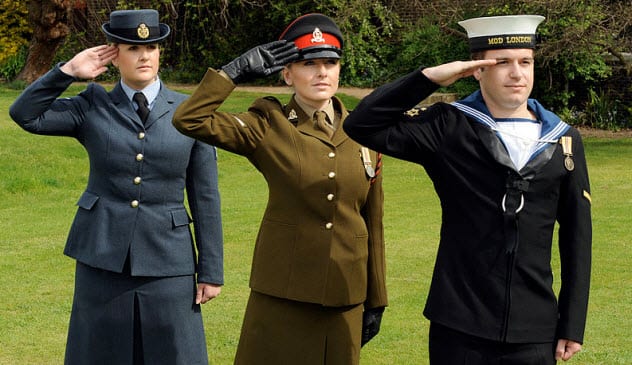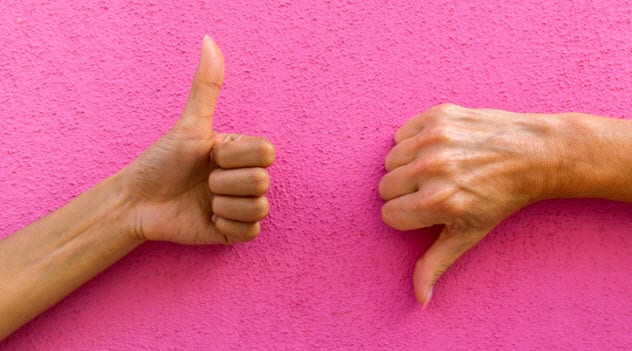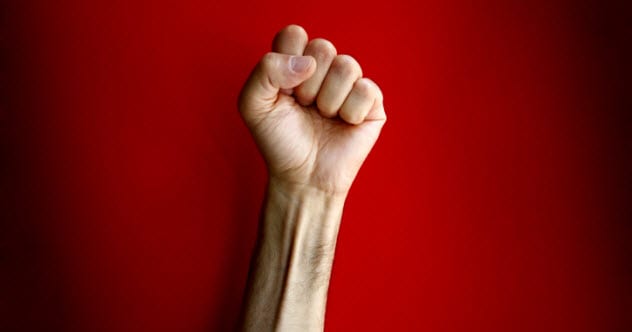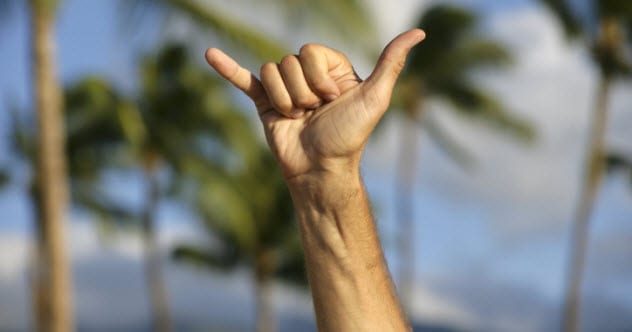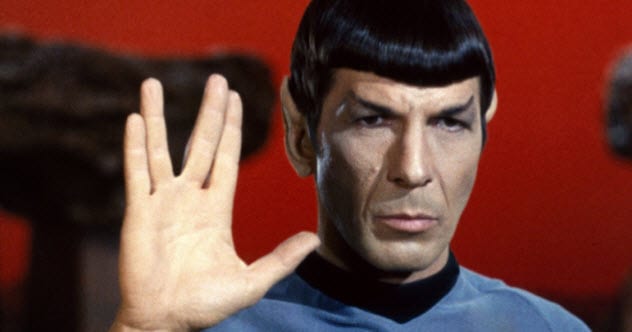One area of body language isn’t that difficult to interpret. In fact, the meanings of some hand gestures seem fairly straightforward—like the infamous middle finger. Interestingly, most hand gestures never started with the insulting, neutral, or positive meanings they have today. Many have changed meanings so much that you may be surprised by their origins.
10 Middle Finger
The infamous middle finger is one of the most offensive hand gestures out there. It can mean anything from f—k you to f—k off, go f—k yourself, and shove it up your a—. The sign did not mean any of these when it originated in ancient Greece. The meaning was no better, though. It was used to ridicule a man penetrated during gay sex. The Greeks called the gesture katapygon. The term spilled over into ancient Latin where it was called digitus impudicus (“shameless, indecent, or offensive finger”). By the 1700s, the gesture meant sexual intercourse or a penis. When used to depict a penis, the fingers on either sides of the upright finger represented the testicles.[1] Italian immigrants introduced the gesture to the U.S. in the 1800s. At that time, it took on its modern meaning. The gesture became popular and replaced yelling as a method of showing discontent with a person.
9 Salute
The origin of the salute is somewhat obscure. One theory claims that it first appeared in ancient Rome when soldiers raised their hands to greet other soldiers. This is disputed because there is no evidence that Roman soldiers raised their hands in greeting. Another theory claims that the gesture originated in medieval Europe when fully dressed knights raised their visors with one hand to show approaching knights that they were friendly. This idea is also disputed. A third undisputed theory claims that British soldiers created the salute. Before the 18th century, British soldiers removed their hats to greet higher-ranking soldiers. This became an issue in the 1700s when British soldiers started wearing elaborate hats. Junior soldiers started slapping their hats to greet senior soldiers because removing the hats was a chore. The British army later formalized the gesture and turned it into the salute that we know today. However, unlike the U.S. military that salutes with the palm facing downward, British soldiers salute with the palm facing outward. This is because the U.S. military salute is based on the British Navy salute. The British Navy salutes with the palm downward because sailors often had dirty palms.[2]
8 Handshake
A handshake is the most common hand gesture out there. Like other frequent hand gestures, its origin is somewhat disputed. Many agree that the handshake started hundreds of years ago when men moved around with weapons. Men in close contact shook their right hands to prove that they did not have weapons on them. They even moved their hands up and down—just as we do today—to make weapons hidden in their sleeves fall out. Another likely origin indicates that the gesture may have begun as a sign of sealing an oath or promise. An artifact from the ninth century BC even depicts King Shalmaneser III of Assyria shaking hands with the king of Babylon to seal their alliance. Whichever is true, the Quakers were the first to use the handshake as a form of greeting. In the 17th century, the Quakers adopted the handshake over concerns that bowing the head or removing a hat did not show equality.[3]
7 Crossed Fingers
Crossed fingers are used for luck or to indicate a lie or preplanned ploy to renege on a promise. Its origin is disputed, which isn’t surprising as its dual use could indicate two different origins. Some say that the gesture first appeared in pre-Christian Europe. Europe was a hotbed of superstition at that time. A common superstition was that good spirits lived at the intersections of crosses. If two people made wishes while creating a single cross with their index fingers together, they believed that the good spirits would be inclined to grant their wishes. Others say that the gesture first appeared after Christianity reached Europe. Christians were persecuted at the time, so they created several secret symbols, such as the cross, for identification. Back then, two people created the cross symbol differently. Each made an “L” sign with the thumb and index finger. Then they would cross their index fingers with their thumbs touching. Whichever explanation is true, the gesture became common during the 14th century when soldiers fighting the Hundred Years’ War crossed their fingers for luck and protection. Soldiers made the cross with two of their fingers because it was sometimes impossible to create the symbol with another soldier.[4] For the lying connotation of crossed fingers, it is believed that early Christians made the cross when they told a lie because it supposedly protected them from the wrath of God. At the time, the punishment for being Christian was death. As a result, Christians often denied their faith so they would not be killed.
6 Sign of the Horns
The sign of the horns is a hand gesture with various meanings and uses in different cultures. It is formed by extending the index and little finger while holding the middle and ring fingers down with the thumb. In Italy, when made with the “horns” pointed downward, the sign is used when confronted with unfortunate events or to ward off bad luck or the “evil eye.” It is called a corna, meaning “horns.” Also, in Italy and other parts of the Mediterranean, it can also be seen as an offensive gesture when directed at a person and swiveled back and forth. Then, it is a sign of cuckoldry. It is also a sign seen in rock ‘n roll culture. It was first seen on the album cover for a band named Coven and then on a Beatles album cover (Yellow Submarine). It was made famous in the heavy metal scene by Ronnie James Dio. Dio claimed that it was not a sign of the devil, but instead, it was a sign he learned from his Italian grandmother—a symbol to ward off the evil eye. The horns became popular in metal concerts very soon after Black Sabbath’s first tour with Dio. The sign would later be appropriated by heavy metal fans.[5] The “sign of the horns” is also associated with gang membership or affiliation with Mara Salvatrucha (MS-13). The significance is both the resemblance of an inverted “devil horns” to the Latin letter ‘M’ and the broader demonic connotation of fierceness and nonconformity. To anyone in Texas, the hand gesture is most well-known as the Hook ‘em Horns sign for the University of Texas at Austin. The gesture is meant to approximate the shape of the head and horns of the UT mascot, the Texas Longhorn Bevo. Other sports teams also use this gesture, or a slight variation, to represent their various mascots—bulls, bison, and devils. The symbol was also described in Bram Stoker’s Dracula in 1897.
5 V-Sign
The V-sign could have a different meaning depending on where you are. The palm-facing-outward version common in the U.S. is used to indicate peace or victory. The palm-facing-inward method common in Britain is considered an alternate version of the middle finger. The origin of either sign is disputed, and whether they are of the same origin remains unclear. Some believe that the gesture first appeared during the Battle of Agincourt between England and France in October 1415. French soldiers hated the highly effective British archers so much that the French cut two fingers off the hands of captured British archers. The fingers were the most important for using a bow. Other archers realized this and began raising two fingers at French soldiers as an insult.[6] Another story indicates that the V-sign originated from the cuckold gesture made with the little and index fingers. The cuckold gesture was usually directed at the husband of an adulterous wife. While derogatory, it was not considered a serious insult.
4 Thumbs Up And Thumbs Down
A thumbs-up is a symbol of approval. A thumbs down shows disapproval. Both gestures originated from the gladiator combats of ancient Rome. They were called pollice verso (“turned thumb”) at the time. At the end of bloody combat, the referee was sometimes asked whether a defeated and badly injured gladiator should be killed or spared. The referee turned to the spectators, who indicated their choice by giving a thumbs up or thumbs down. A thumbs up meant the loser should be killed. A thumbs down (indicating “swords down”) meant the loser should be spared.[7]
3 Clenched Fist
The clenched fist is the ultimate symbol of solidarity. It has been used by oppressed, resistance, and political groups to show solidarity, defiance, struggle, triumph, resistance, and power. Most Americans will be surprised to learn that the gesture is actually a communist symbol. The clenched fist first appeared during the Spanish Civil War between the fascists and the communists. The fascists used an open palm salute as their symbol. Searching for a symbol of their own, the communists settled for the clenched fist. The communists soon used the symbol to show they weren’t pushovers. Unlike the open palm that depicts a palm, four weak fingers, and a thumb, the clenched fist depicts four weak fingers and a thumb made into a powerful fist. Other communist groups later adopted the symbol, and it soon spilled over into civil rights groups and anti-colonialist opposition.[8]
2 Shaka Sign
The shaka sign is made with the pinky finger and thumb pointing upward while the other fingers rest on the palm. It is popular in Hawaii where it is often accompanied with the greeting “Shaka, brah!” It means everything from hello to goodbye, thank you, hang loose, right on, no need to rush, and everything is all right. The origin of the shaka sign is disputed. Two stories attribute its start to a Hawaiian named Hamana Kalili. Although both versions agree that Kalili had lost three fingers on his right hand, one claims that he unwittingly created the gesture when he used his right hand to bless a person.[9] The second version states that Kalili started the gesture when he used the hand to ward off children trying to jump on trains. Other sources say that the gesture was first used by a surfer who had three fingers bitten off by a shark. A fourth explanation states that the sign was used by the first Spaniards who landed in Hawaii. The Spaniards supposedly made the gesture at the natives but raised their thumbs to their lips. This showed that they were friendly and wouldn’t mind sharing a drink with the natives.
1 Vulcan Salute
The Vulcan salute resembles the V-sign except that it is done with four fingers on the same hand. With all fingers on that hand initially together, the middle and ring fingers move away from each other to create the letter V. The Vulcan salute is considered a greeting by fans of the Star Trek series and people who just love sci-fi. Leonard Nimoy first used the Vulcan salute when he played Mr. Spock in a 1967 episode of Star Trek. Initially, it was a greeting among members of the Vulcan race in the series and meant “live long and prosper.” The gesture was created by Nimoy, who wanted the Vulcans to have a unique greeting.[10] Nimoy borrowed the Vulcan salute from a similar Jewish gesture depicting the Hebrew letter shin, the first letter in “Lord.” Jewish priests can use the gesture to bless people during services, which Nimoy had seen when he was younger.

